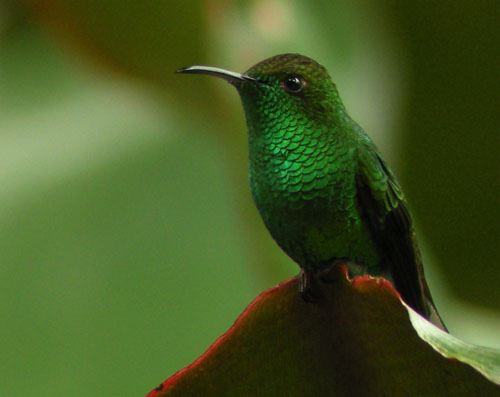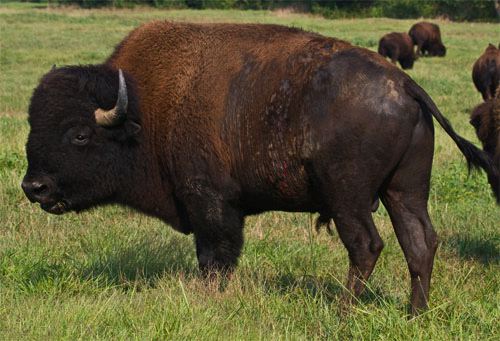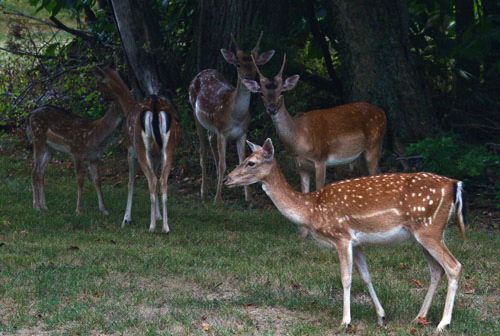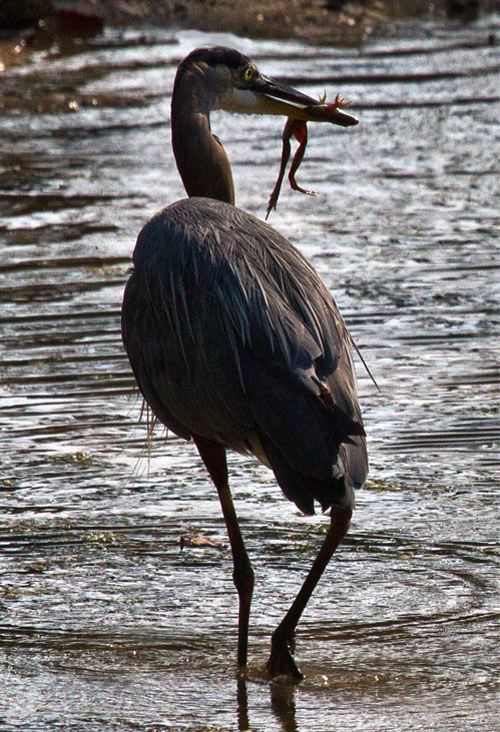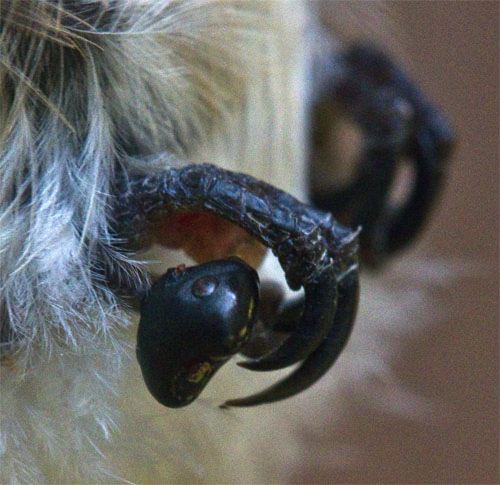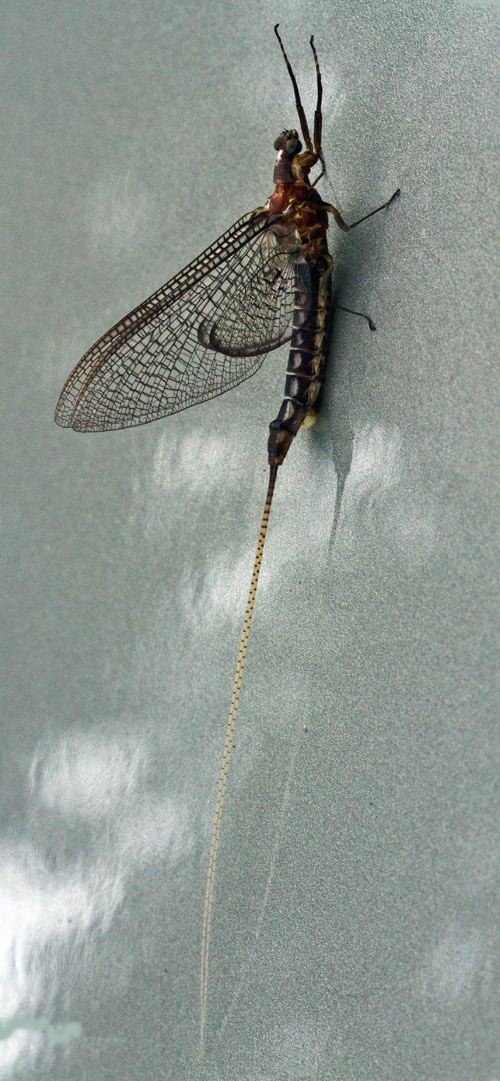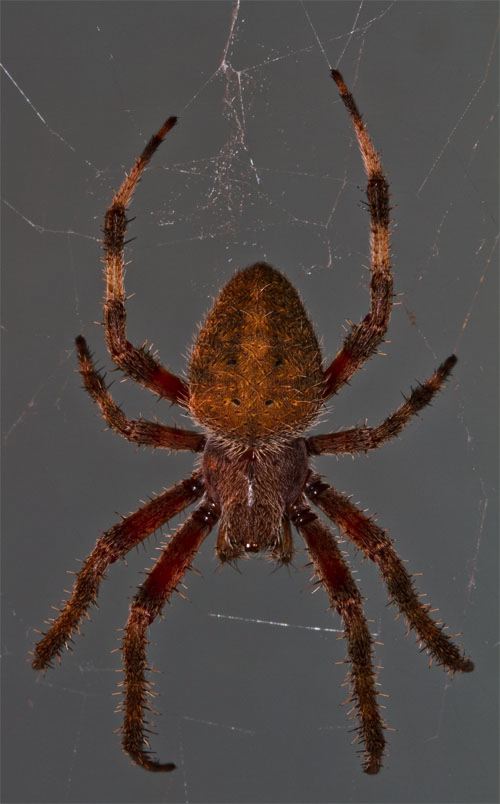|
|
|||
|
(Back to Preceding Week; on to Next Week) |
|
|
|
LAND BETWEEN THE LAKES: Each August since 2003 we've motored 500 miles from Hilton Pond Center out to Land Between the Lakes in western Kentucky, where invariably the weather is hot and the hummingbird population is even hotter.
All text & photos © Hilton Pond Center We've been privileged for eight years to lecture at LBL about our hummer research in the U.S. and in Central America, and to lead workshops in which we provide many visitors--more than 1,600 in three days in 2010--with information about hummingbird natural history. We were especially excited for this year's trip to have company in the person of Ernesto Carman Jr., the outstanding young Costa Rican naturalist who has served as expert guide and collaborator during our midwinter hummingbird expeditions to his home country. The Hiltons have gotten quite close to Ernesto in the past six years--we were even honored to attend his wedding in Costa Rica last winter--so we were quite pleased when he was able to fly north this week to help us band birds at Hilton Pond and participate in the LBL Hummingbird Festival. He even gave workshop attendees a different perspective on hummingbirds in general during a half-hour talk about Neotropical hummers--including the adult male Coppery-headed Emerald (above), one of two endemic Costa Rican hummingbird species he gets to observe back home.
All text & photos © Hilton Pond Center Ernesto is a sponge for natural history information, so it's always fun to take him to new places where he makes cogent observations about local flora and fauna and compares them to similar organisms back in Costa Rica. So, in addition to helping out with the hummingbird festival, he was excited to visit diverse habitats at LBL and add new species to his North American checklists. One mammal in which he was especially interested was also a long-time favorite of ours--the American Bison, Bison bison, which occurred historically in western Kentucky and is now maintained on a restoration prairie within Land Between the Lakes. The young male buffalo above, massive as he was, wasn't even the dominant bull in the LBL herd that is a splendid reminder of how abundant wildlife was in these parts before European settlers arrived.
All text & photos © Hilton Pond Center Land Between the Lakes hosts several other big mammals, although one is not native to the Western Hemisphere: the Fallow Deer, Dama dama (does and young bucks, above). According to LBL officials: "The Fallow Deer herd is a unique aspect of our wildlife inhabitants. This species, native to Europe and Asia, was brought to LBL by the Hillman Land Company in 1918. LBL's herd is believed to be the oldest population of fallow deer in the country, and at one time was the largest. Today the herd numbers fewer than 150 and hunting of fallow deer is not permitted. Although LBL's wildlife management activities focus on native species, the fallow herd is maintained for wildlife viewing and because of its historical significance." These animals are quite tame and wandered the woods around the Nature Station, seldom spooking the way native White-tailed Deer are prone to do.
All text & photos © Hilton Pond Center As we drove around LBL's Elk & Bison Restoration Prairie one afternoon, we came to a shallow pond that is used by big grazing animals AND by numerous other kinds of wildlife. Silhouetted in the blazing sun was a Great Blue Heron, one of the larger birds to be found at LBL. The heron was stalking the pond's shallow waters, trolling for anything it could snatch up with its powerful bill. We watched it grab a couple of fish and then stab the water, deftly coming up with a large Green Frog (above). This hapless amphibian had no chance against the hungry heron.
All text & photos © Hilton Pond Center One unusual bird encounter during the Hummingbird Festival was a Ruby-throated Hummingbird whose feeder perching was somewhat hampered by a dark semi-spherical object on its foot (above). Keen-eyed Ernesto first spotted the hummer and from a distance we suspected it had avian pox--a viral disease that causes abnormal growths on feet, legs, and bills in many bird species. Up close, however, we could see the object wasn't a growth at all but the head of a soldier ant that apparently had clamped down in a death grip on the hummer's inner right toe. The death that resulted wasn't that of the hummingbird but of the ant--whose body broke off at the neck, leaving behind the head and its tightly embedded mandibles; clearly visible with our macro lens was one of the ant's eyes (above). When we crushed the ant head with fine-tipped forceps we saw the hummer's toe was swollen and discolored pink, and that the claw pointed off in an abnormal direction. We can only guess whether removal of the ant's head will allow the hummer to regain normal use of its toe, but it's still quite interesting to discover something as tiny as an ant could have such an impact on the smallest of our eastern North American birds.
All text & photos © Hilton Pond Center We saw lots of other insects at LBL, including dragonflies, cicadas, butterflies, and--one morning--a fine specimen of a Mayfly (above) that was resting on the hood of our van. This creature was about four inches long, much of which was a pair of long, delicate appendages that extended from the rear of its abdomen. These were the Mayfly's caudal filaments, called "cerci," that help balance the adult fly while in the air and apparently keep it from drifting in the wind during mating swarms. The individual above undoubtedly was a male, whose long forelegs play a critical role in grasping a female during the coupling process.
All text & photos © Hilton Pond Center Mayflies spend their larval stage in water, so with two big impoundments at Land Between the Lakes one might expect to encounter lots of these clear-winged insects, and we did. Many Mayflies are taken by predatory fish as they emerge from the water, some are eaten by bats, and still others become snared in spider webs. Such was the case with a Mayfly that fell victim to a big spider that spun her web across the front door to the Kenlake State Resort Park cottage in which we stayed during the Hummingbird Festival. Each evening we had to duck low to get past the sticky silk that was strong enough to capture insects as big as Katydids and Mayflies. An orb-weaver, this particular specimen was a Barn Spider, Araneus cavaticus (above), a fairly common arachnid whose color varies from gray to tan to the rich brown above. To get our photo we used a 100mm macro lens on a Canon 7D--all mounted on a tripod for stability--and lit our subject with the camera's on-board flash. Visible in the image above are the spider's very hairy legs and body but only SOME of her eyes.
All text & photos © Hilton Pond Center Yes, it was hot as blazes for this year's Hummingbird Festival at Land Between the Lakes, so we were always glad to see the sun going down at day's end (above). Despite the heat we were most pleased to have Ernesto Carman Jr. along for the event and to share his excitement at discovering a few of the many interesting plants and animals to be found around Woodlands Nature Station in western Kentucky. We were also happy to head back to Hilton Pond Center to band a few more hummingbirds and prepare for next weekend's hummingbird festival in West Virginia's New River Gorge region--where we'll get to show Ernesto some of the natural wonders of the Mountain State. All text & photos © Hilton Pond Center
|


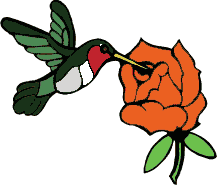 "HUMMINGBIRD MORNINGS"
"HUMMINGBIRD MORNINGS" The station is home to a very nicely implemented Hummingbird Festival, held at Woodlands Nature Station because the site hosts hundreds--likely thousands--of resident and migrant Ruby-throated Hummingbirds each summer and fall. We believe this local abundance of hummers is due to several factors. For one, LBL is a vast area of 170,000 acres or so--bounded by Kentucky Lake and Lake Barkley and filled with deciduous forests and meadows attractive to breeding and migrant hummingbirds. More importantly, personnel have been feeding hummingbirds at the Nature Station for more than 30 years, they enhance their feeders by installing native hummingbird plants, and the closest other hummer feeding operations are miles and miles away.
The station is home to a very nicely implemented Hummingbird Festival, held at Woodlands Nature Station because the site hosts hundreds--likely thousands--of resident and migrant Ruby-throated Hummingbirds each summer and fall. We believe this local abundance of hummers is due to several factors. For one, LBL is a vast area of 170,000 acres or so--bounded by Kentucky Lake and Lake Barkley and filled with deciduous forests and meadows attractive to breeding and migrant hummingbirds. More importantly, personnel have been feeding hummingbirds at the Nature Station for more than 30 years, they enhance their feeders by installing native hummingbird plants, and the closest other hummer feeding operations are miles and miles away. 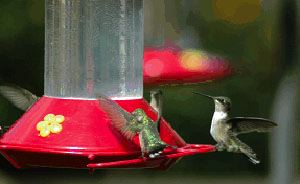 And, just as it takes money to make money, having lots of hummingbirds at the station leads to having lots more, if for no other reason than the sugar water in the feeders is always fresh because hummingbird hordes constantly drain it. Despite the heat--in the upper 90s for this year's event--the mixture never has time to go bad and keeps the staff busy refilling 20 or so large feeders at least once a day during August and early September. It's almost impossible to describe how many ruby-throats can be seen at even given moment during the Hummingbird Festival, but many visitors liken them to swarms of bees as the hummers zoom from one feeder to the next.
And, just as it takes money to make money, having lots of hummingbirds at the station leads to having lots more, if for no other reason than the sugar water in the feeders is always fresh because hummingbird hordes constantly drain it. Despite the heat--in the upper 90s for this year's event--the mixture never has time to go bad and keeps the staff busy refilling 20 or so large feeders at least once a day during August and early September. It's almost impossible to describe how many ruby-throats can be seen at even given moment during the Hummingbird Festival, but many visitors liken them to swarms of bees as the hummers zoom from one feeder to the next.